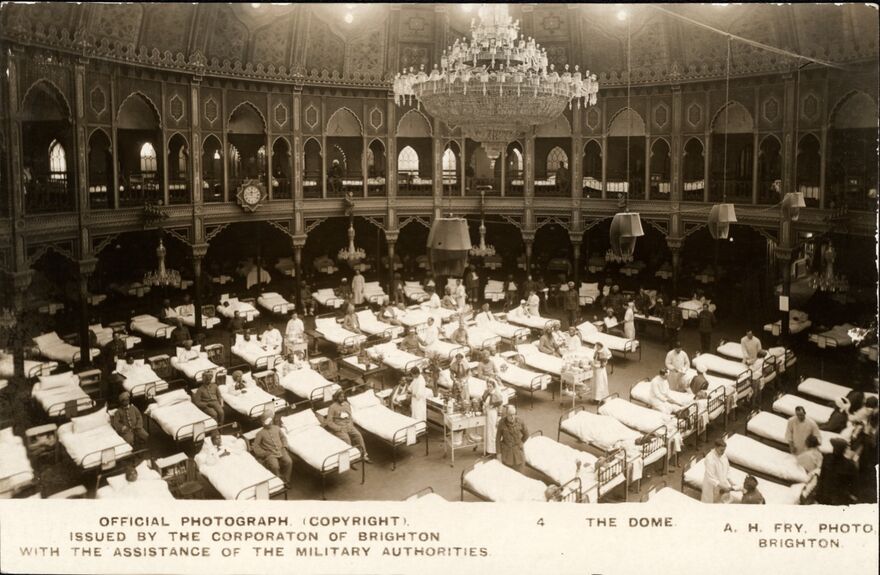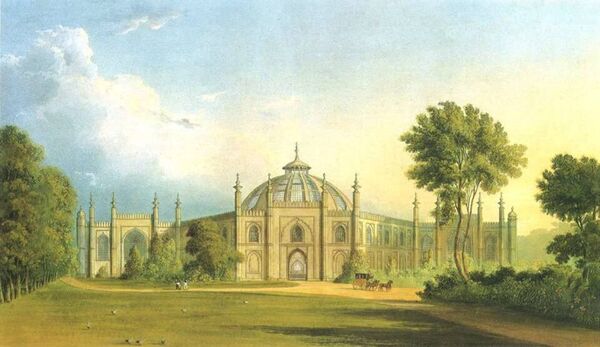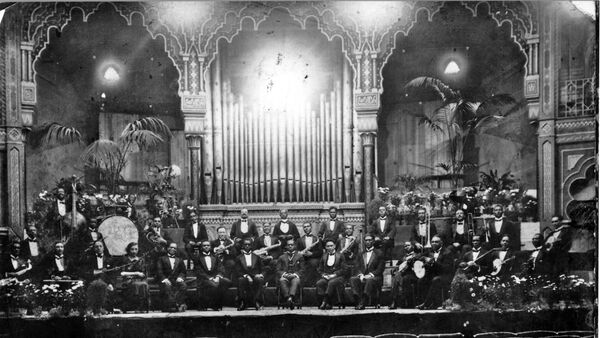
Social History
Brighton Dome has been at the heart of the local community for over 200 years

This postcard shows, and seems to celebrate, four suffragettes campaigning outside the House of Commons. However, a message written anonymously on the back of the postcard reveals a sinister intent and demonstrates how bad tempered, and even violent, meetings associated with women’s suffrage could become;
'Gentlemen. A meeting will be held in the Dome, at B'ton on Wednesday next by Mrs Crissy Pankhurst. We hope to see a big audience of men to make things a bit livly [sic]. Please bring a weapon to defend yourselves with as the ladies use dog whips. I am yours truly the secretary to the suffragetts [sic]. Doors open at 7.30.'

In 1910, Suffragettes Mary Leigh and Eva Bourne were arrested at Brighton Dome. They were discovered hiding inside the venue’s organ intending to interrupt a speech due to given by Prime Minister Herbert Asquith. Mary already had a reputation for being repeatedly imprisoned for her militant activities and Asquith was a frequent target. Very little is known about Eva Bourne and this name may have been given in order to protect her real identity.

In May 1910 Emma Newsam gained entry to the concert hall by dressing in a man’s overcoat and cap, once inside, she shouted out ‘votes for women!’ before being bundled outside.
In 2018, Brighton Dome was recognised as one of 41 buildings across England that were at the centre of suffragette action.

In November 1914, news reached Brighton that Indian soldiers wounded on the Western Front were to be received by the town. The work of converting the Royal Pavilion and Brighton Dome was completed in a very short time and the first contingent of Indian soldiers arrived at the Royal Pavilion just 13 days after.

There were 724 beds available across the Royal Pavilion Estate. The most seriously injured were treated in the Corn Exchange, with most of the wounded suffering from gunshot and shrapnel wounds, resulting in fractures in the upper and lower extremities. Some patients were also recovering from the use of poison gas.

Nine kitchens were established, most of them in tents erected on lawns. They catered for Muslims and meat eating or vegetarian Sikhs. Special arrangements were made for the ritual killing of animals and storing of meat and there were also separate bath houses, latrines, mortuaries and two operating theatres.

Inside the Concert Hall, the soldiers were entertained with magic lantern shows and organ recitals. The recitals continued until December 1915, when the Indian soldiers were removed from Brighton. On their departure, the commanding officer at Brighton Dome wrote a grateful letter to the Brighton and District Organists’ Association to thank them for their work.

From April 1916, the Royal Pavilion Military Hospital provided surgery, treatment and rehabilitation for over 6,000 British amputee veterans of World War One.

It was clear from the photographs that Joan had enjoyed the dances held at Brighton Dome during World War Two. Dome Dancing was a programme held between 1940 and 1946 for both local and allied soldiers. In 1942, the Dome Dancing Forces Dance Club opened, offering free dancing lessons twice a week for members of the Forces.

As well as regular dances on a Saturday night for entertainment, there were special dances and events held such as for Canadian Dominion Day and New Year's Eve, as well as the Duchess of Norfolk's Regency Ball in aid of the Red Cross Prisoners of War Parcel Fund. We are particularly excited about these images as they are our only photographs from this era.


